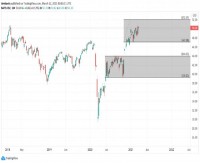|
 SC Moatti is the managing partner of Mighty Capital, a Silicon Valley venture capital firm, and Products That Count, one of the largest and undoubtedly the most influential network of product managers in the world. Previously, she built products that billions of people use at Facebook, Nokia and Electronic Arts. Andrew Chen, General Partner at Andreessen Horowitz, called SC “a genius at making mobile products people love.” Governance for Early Stage Companies Early stage company founders and their investors rely heavily on their Board of Directors. A capable board member can, and should, be a huge asset to any organization. Directors provide wisdom of experience, unique insight, and guidance in maximizing shareholder value. As the founder and managing partner of a Silicon Valley VC firm (Mighty Capital), I’ve witnessed and participated in the formation of dozens of boards over the years. I also serve on the Board of Directors for both public and private companies. Personally, governance is a topic I care a whole lot about, so much so that I teach it at Stanford University. So what’s my vision of the ideal board member? What does it take to be a true value adding player, specifically at an early-stage company? Plus, what’s required of board members during deciding moments, such as fundraising, CEO transition, insolvency, and exits? Allow me to share my insight and observations here. Accountability Vs. Responsibility I can’t stress enough that the basic principles of board responsibility shouldn’t be glossed over lightly. Everything else must build upon these core concepts:
Now while it may seem obvious, a loyal board member must never lose sight of these. That’s especially important because board members are accountable for the affairs of a corporation even though they may not be responsible. Let’s contrast responsibility vs. accountability. A product manager may be responsible for a product launch. She runs the show and is in charge of execution. She may also be held accountable if the launch goes bad. So accountability runs deeper than responsibility. It’s more personal, and, therefore, it tends to be more individual. Board members don’t have hands on, day-to-day control over operations. Instead, they offer high level guidance and make sure things move forward as planned. When major problems arise, they remain informed and help provide perspectives and alternatives. The distinction between responsibility and accountability demonstrates a key characteristic of a great board member: they are accountable. They must answer for outcomes and guide the organization at the highest level despite not having direct control over operations. Duty of Care & Duty of Loyalty The Duties of Care and Duties of Loyalty are foundations upon which board service is built upon. These duties reflect accountability in action. Duties of Care means that you exercise reasonable care in the decisions you make for the company. The board must act in good faith for the benefit of the company, and the actions they take should be in the company’s best interest based on a reasonable investigation of the options available. It means that board members should attend meetings and participate in a meaningful way. As I like to say, “show up, suit up & speak up!” It’s also important that the minutes reflect adequate consideration and deliberation. Duty of Loyalty means that the Board of Directors must be loyal to the company and its shareholders and act in their best interest. Under no circumstances can board members act in their own interest or engage in self-dealing while making decisions or taking actions on the company’s behalf. Does that sound obvious? Well, in the real world, that’s not always so simple. For example, consider some of these sensitive situations:
Board members are frequently involved in intricate financial and business decisions, where the priorities may occasionally collide and the “Business Judgement” rule isn’t clear cut. Unless sufficient care is taken, even unintentional breaches can have significant consequences. Words like Duty, Care, and Loyalty are serious. Designing A Board & Integrating New Members Technically, the board hires the CEO, president, and other officers to run the day-to-day operations of the company. However, in startups, what typically occurs is that the lead investor takes a board seat and populates the board. If you’re building a board, it’s important to consider its composition as a whole. For example, if your board already has a strong technical makeup, then it might make sense to bring on someone with HR, financial, or governance skills to round out the dynamics. Communication styles, risk profiles, and time availability should also be considered. Whatever you decide is the right composition, make sure to keep your startup board as lean a possible. Also, keep an odd number of directors so that votes always yield a majority. When adding a board member, it’s important to clearly define the role beforehand. Specifically, what is the current board composition, and what are the gaps? What are the expectations, and what level of compensation will be offered? Will payment be made on a retainer basis, per meeting, or in shares? The next step is to generate a list of candidates and start with the initial screening and candidate qualification. Remember, adding a new member challenges the board culture, so it makes sense to integrate during the selection process. The process is inevitably a two way street. Candidates are interviewing the company/board as well, so don’t try to sell them anything. Instead, see if a relationship develops. Spend personal time together, and take them out to dinner with other existing board members if possible (you pay!). Only by seeing them with their guard down, so to speak, can you begin to understand their true personality and motivations. How do you know someone might be a good board candidate? In the startup universe, I refer to this as being board ready, and much of it has to do with visibility. What do you see them doing? You can look at it in three phases. First, does the candidate join relevant conversations? This might involve curating views, hosting interactions and debates, and retweeting something that strikes them as important. Second, does the candidate shape conversations? They should be making insightful comments, moderating discussions, and generating original perspectives that carry weight. Finally, your potential board member should be driving conversations. This means taking a stand, writing longer content on pertinent issues, and giving talks about what matters. Key Scenarios & Right Response A well functioning board will follow a structured agenda for every meeting to ensure that sensitive topics aren’t planted by surprise. When designing?a board agenda, I recommend following Roberts Rules of Order. Ask board members to be prepared, study the board package ahead of time, and show up in person and on time. Attitude during the meeting should be of the utmost respect and seeking to resolve conflicts, that is, provide and find solutions. Everyone should be polite, use politically correct speech, and only interrupt with agreement. This is especially important during some of the key scenarios described below: Fundraising - Startups are always fundraising, and fundraising should start immediately after closing the last round. Board members need to build and nurture a list of potential investors (“I’m not fundraising right now, I just want your feedback.”). Identify milestones to funding as well as any concerns and roadblocks that may come up. Get to know potential investors and understand the value they might add beyond money. Finally, the board must keep the startup’s investors informed on company progress. Board / CEO Relationships - A key board responsibility is to ensure successful CEO onboarding/transition. Some of the tough questions related to CEO succession must be asked (in private) which is why board relationships must be built on honesty, trust, respect, and transparency. When integrating a new CEO, boards should define success in measurable terms. Communicate the process, ask for feedback, measure progress, and adjust as needed. Firing a CEO must be based on failures in performance and/or failure to implement succession plans, and all non-management directors must be aligned. It’s critical to establish a plan for the entire transition process, end-to-end. This means engaging lawyers and determining timing, delivery, interim plan, communication to stakeholders, etc. Ideally,?a replacement CEO candidate has already been identified. Insolvency - Most startups fail, that’s the reality. To save the ship, a startup needs 9+ months of runway. The board may seek new investors, management change, a company location move, banking solutions, or even a turnaround / insolvency specialist. Anything less than 6 months likely involves planning for a controlled landing or crash. Remember, how you handle the wind down helps define your reputation. Own your mistakes and learn from them. The “why” isn’t as important as the lessons learned. Dealing with failure is the board’s responsibility, and here are some key warning signs to watch out for (from bad to worse):
Exit Strategy - Just like they’re always fundraising, startups should always be looking for an exit. Exit or sale should be formulated periodically from building a list of potential buyers to interviewing investment bankers as needed. Here again, starting early maximizes outcomes: the optimum exit time is 3 years from the first institutional check. Remember that most CEOs want to keep running their company forever. To solve this, get the management team pumped about life post-exit. What will they be able to do with their newly acquired wealth? This often means involving families and wealth management professionals. Conclusion Governance involves dealing with multiple stakeholders and highly complex issues all for?the benefit of the company. However, despite the complexity, good governance is founded upon relationships and basic principles. Startups may have their nuances, but the same rules apply. If honesty, trust, respect, good communication, and transparency are your priorities, many problems will easily be avoided. So if you get the chance, get out there. Govern well. And make a positive impact on the world! | ||||
|
Horizons: Family Office & Investor Magazine
The Startup Board Member: Key Characteristics & Situation Behavior |
|





 RSS
RSS









